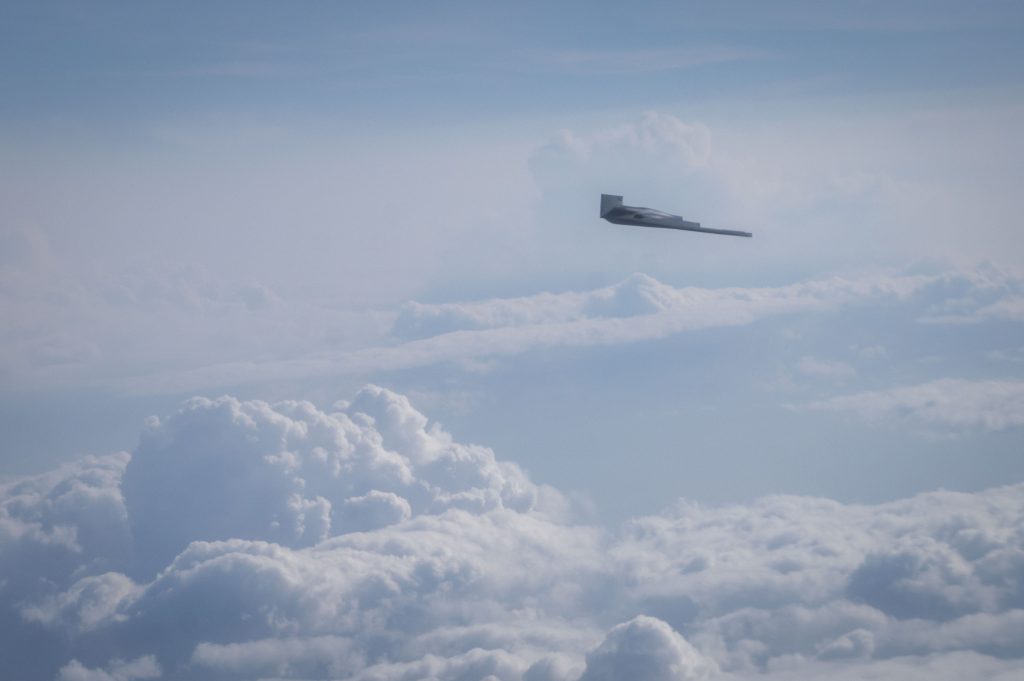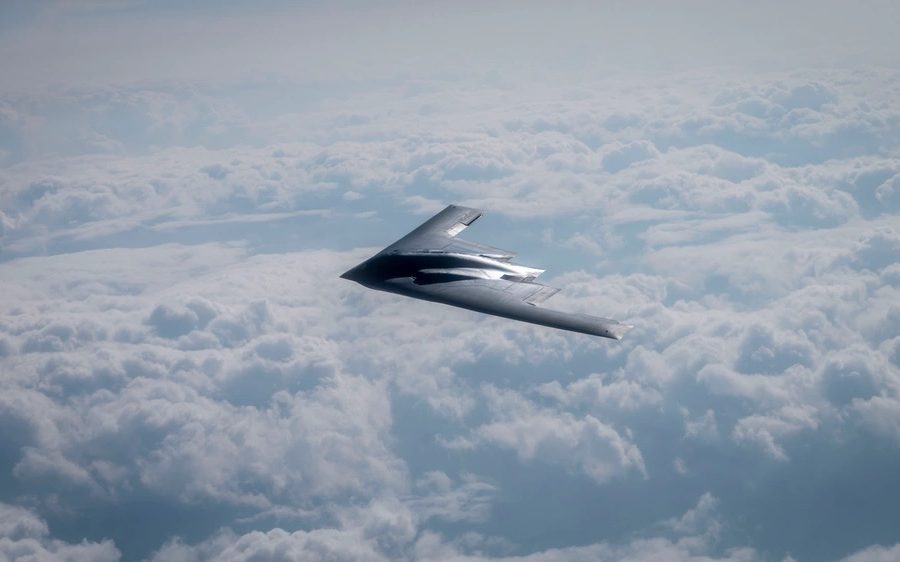An Air Force B-2 Spirit bomber flew deep into the Arctic Circle on Aug. 15 on its way from Iceland to Alaska to participate in the training exercise Red Flag-Alaska 23-3.
The stealth jet is one of three B-2s deployed as part of a Bomber Task Force rotation in Keflavik, Iceland. An open-source flight tracker reported a B-2 check in over radio at the 83rd parallel north on Aug. 15, putting it above Canada’s northernmost island. A spokesperson for the 509th Bomb Wing at Whiteman Air Force Base, Mo., which operates America’s 20 B-2 bombers, confirmed the report to Air & Space Forces Magazine.
“While the B-2’s home station and routine training areas don’t normally bring the aircraft to the Arctic, this training mission provided a welcome opportunity to practice navigating and operating in the challenging high north environment,” said 2nd Lt. Lindsey Weichel.
The B-2 integrated with U.S. and allied aircraft for a training mission over the Joint Pacific Alaska Range Complex, then turned back to Iceland. Though the bomber could have made it from Iceland to Alaska without refueling, KC-46 refueling tankers from the New Hampshire Air National Guard’s 133rd Aerial Refueling Squadron helped the stealth jet get there and back without landing, Weichel said. The entire sortie lasted over 16 hours.
This is not the first time a B-2 has flown north of the Arctic Circle. In 2020, multiple Spirits journeyed from Missouri to train with Norwegian F-35 fighter jets somewhere over the European side of the Arctic, then flew all the way back thanks to gas from KC-135 tankers from the 100th Air Refueling Wing based in RAF Mildenhall.

The U.S. bomber fleet has ranged across the globe this year, visiting Indonesia, the Baltics, Guam, the Middle East and other places in between.
“It seems as though everyone likes to have a bomber in their region,” Air Force Gen. Anthony J. Cotton told reporters on Aug. 16 at U.S. Strategic Command’s annual deterrence symposium. “It shows our resolve in showing that extended deterrence is alive and well when it comes to the United States.”
It also demonstrates “the strategic reach” of the bomber fleet, Cotton said, though that reach takes effort. The 509th Bomb Wing highlighted the work that intelligence, weather, communications, and maintenance Airmen do behind the scenes to make it happen.
“On the surface it might look easy to fly jets and operate out of a new environment, but behind the scenes it takes a team working tirelessly hand-in-hand to hack the mission,” Capt. Andrew Dang, a B-2 pilot with the 393rd Expeditionary Bomb Squadron, said in a press release.

